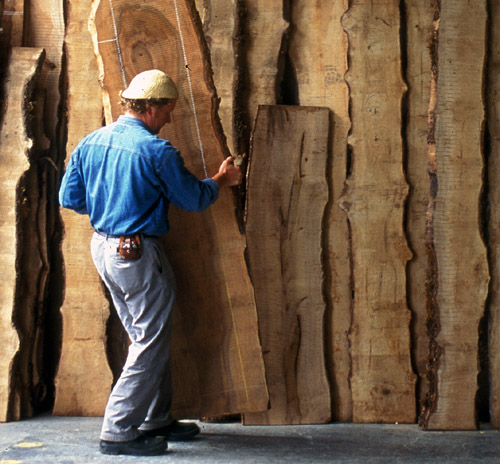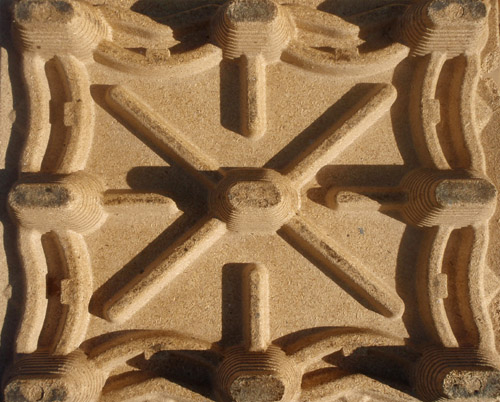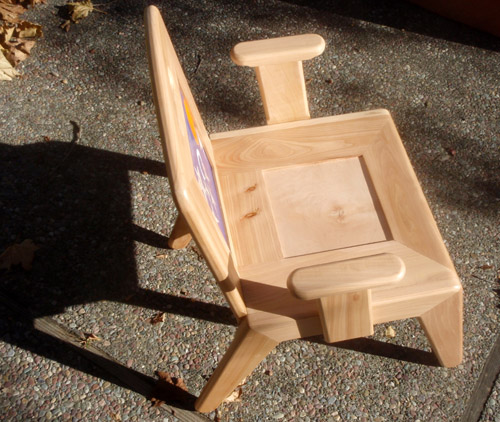 1/4 scale model of my new dining chair concept for Greens Restaurant
1/4 scale model of my new dining chair concept for Greens Restaurant
I generally try to avoid working under pressure, but find I often do my best work with my back up against the wall. When our Wowhaus Interview was published in San Francisco magazine last month, I was just beginning to clear the decks and shift my focus to a demanding interior design project. To my surprise and delight, the article inspired a bevy of inquiries about my furniture design, leading to several new commissions, including a new dining chair for the famous Greens Restaurant in San Francisco.
Over the holidays, I’ve designed a simplified, affordable adaptation of my Elder Chair, located a manufacturer and built a 1/4 scale model (pictured above), which I will present to the Greens management team later this week. The new chair combines the open-quadrant-backrest styling of my Elder Chair, which I originally developed for Alice Waters’ Edible Schoolyard Dining Commons, with the structural program of the Pilot Chair I recently designed and made for Becoming Independent. To mimic the wall of rectangular window panes looking towards the Golden Gate from inside of Greens, I elongated the open quadrants and narrowed the backrest, emphasizing the chair’s verticality. ???? ??????? ????? ???? ??????? I also added an upholstered seat as a concession to comfort, considering the typically fit, lean patron of Greens. ???? ??????? 365 ??? ????
//
 My projects always begin with sorting the pile, touching the wood
My projects always begin with sorting the pile, touching the wood
 whispy cirrus clouds (mare’s tails) over Doran Beach indicate a change in weather
whispy cirrus clouds (mare’s tails) over Doran Beach indicate a change in weather
 the reassembled 1/4 scale substrate for the Vermillion Rockfish sculpture
the reassembled 1/4 scale substrate for the Vermillion Rockfish sculpture model of the Vermillion Rockfish, skinned in clay
model of the Vermillion Rockfish, skinned in clay the underside of this pallet reminds me of a Mayan city
the underside of this pallet reminds me of a Mayan city my
my 